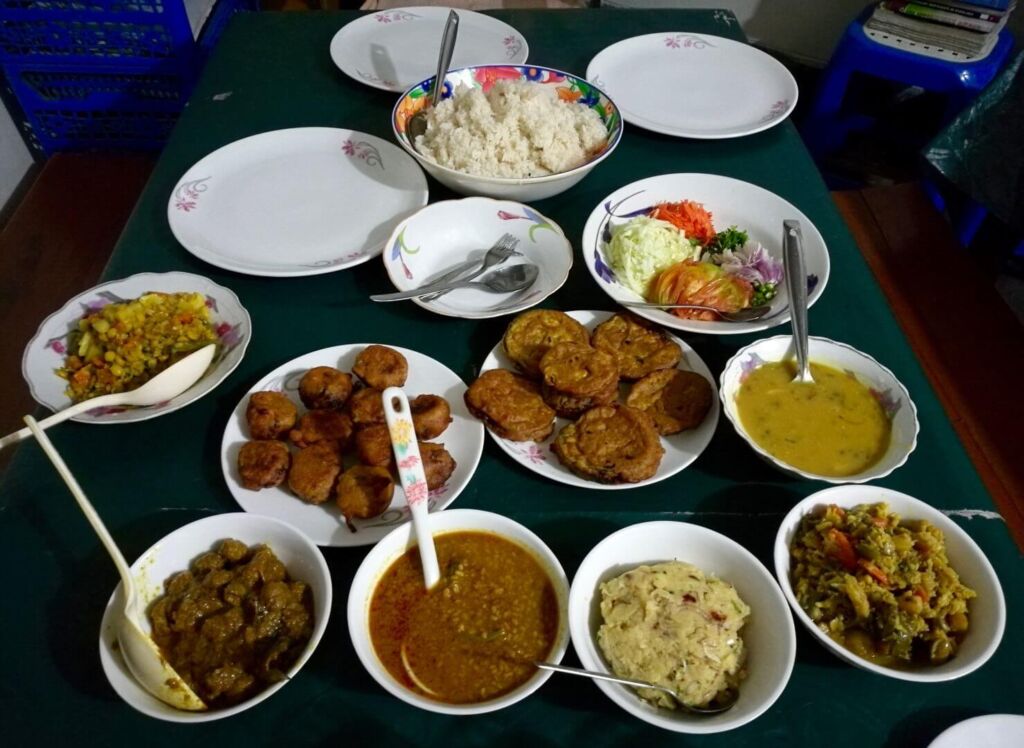
Four our cooking enthusiasts we offer a special activity: today you will cook with a local chef. You will start your activity by going to the market together, after which you will go into the kitchen and start cooking! Of course you will afterwards put all of that yummy food in your tummy :).
Bengali cuisine is the culinary style of the Bengal region in the eastern part of the Indian subcontinent in Bangladesh and the Indian states of West Bengal, Tripura and Assam’s Barak Valley. There is an emphasis on fish, vegetables and lentils with rice as the main ingredient. Many Bengali food traditions draw on social activities, such as adda or the Mezban.
Bengali cuisine is known for the varied use of flavors as well as the spread of its confectionery and desserts. It has the only traditionally developed multi-course tradition of the cuisine of the Indian subcontinent that is analogous in structure to the modern Russian-style service of French cuisine, where food is served in courses rather than in one sitting.
Muslims conquered Bengal around the middle of the thirteenth century, bringing with them Persian culture and cuisine. Islamic culinary influence originated from the upper classes and gradually spread to the local Hindu and poorer Muslim population. Dishes like biryani, korma and bhuna had once been meals of the higher courts, but Mughal cooks brought their recipes to the lower and middle classes. Its influence was strengthened during the rule of the British Raj, where Kolkata became the refuge for many prominent exiled Nawabs, notably the family of Tipu Sultan of Mysore and Wajid Ali Shah, the expelled Nawab of Awadh. The exiles brought with them hundreds of cooks and masalchis (spice blenders), and as their royal patronage and wealth waned, they dispersed among the local population. These cooks came with the knowledge of a very wide variety of spices (particularly jafran and mace), the extensive use of ghee, and the marinating of meats with yogurt and chili.
In Bangladesh, this food has become a staple food for the population, while in West Bengal they have remained the food of professional chefs. Further innovations include chap (ribs slow cooked on a tawa), rezala (meat in a thin yogurt and cardamom gravy) and kathirol (kebab in a wrap). The Mughals had a particular fixation on meat, introducing mutton into mainstream Bengali cuisine as well as already familiar meats such as chicken and venison.
In addition, traditional desserts were mainly based on rice pastes and jaggery, but under Mughal influence they evolved towards significantly increased use of milk, cream and sugar along with expensive spices such as cardamom and saffron.











